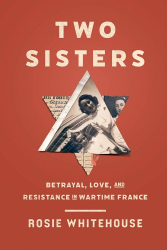In early twentieth-century Paris, Jules Strauss is a German-born emigre to France who becomes a successful banker and an avid collector of art and artifacts. He amasses an especially rich collection of Impressionist art in his Paris apartment, along with masterpieces of earlier French art and furniture. In the early 1930s, much of Strauss’s collection is sold at auction — a casualty of the depression years. He dies in 1943, outlived by his widow and several children and grandchildren, who manage to escape the fate of many Jewish citizens during the Nazi occupation of France. Following the war, his widow files claims that Jules’s remaining collection has been stolen by the Nazis, but she fails to reclaim any of the art.
Jules Strauss is author Pauline Baer de Perignon’s great-grandfather; The Vanished Collection is a memoir of her attempt to find out what happened to the family’s collection.
De Perignon’s story reckons with the lasting effect of the Holocaust on familial legacy and property. The campaign to erase Jewry resulted in the looting and dispersing of thousands of paintings, sculptures and other objects d’art, in part to suppress “degenerate” art and partially to enrich individual Nazi officials. Estimates vary as to the extent of the lost work, only a fraction of which has been successfully returned to their owners or heirs. The popular film Woman in Gold (2015) tells of one such successful claim for restoration. De Perignon’s memoir is a robust addition to the growing genre of art restitution stories, the depiction of her own dogged quest to achieve some sort of justice for her family’s loss captured deftly.
De Perignon’s quest is also a story of her own self-discovery. In 2014, at age forty, she is living what seems like a contented middle-class Parisian life, all the while harboring self-doubt. She aspires to be a writer but has as of yet not published a book nor found a subject. A chance encounter with a cousin she hasn’t seen in twenty years sets her on the path to find the Strauss collection, something of which she was only dimly aware.
Her search turns her into a haunter of obscure archives, a buttonholer of prominent art experts, Nobel-Prize writers (her neighbor Patrick Modiano), and ambassadors, as well as a thorn in the side of some museum officials. She also reconnects with long-lost relatives in her family’s extensive tree of survivors, and she strives to uncover long-lost family lore. Among her many discoveries of her family’s history, she reconsiders what the family’s long-abandoned Jewish heritage means for her.
Not all the mysteries of what happened to the Strauss collection are resolved in her quest, but de Perignon provides a satisfying tale of one person’s attempt to right a longstanding injustice and redeem a family’s heritage.





